Whether it’s your best fur friend’s birthday or she’s going through a finicky phase, dog food toppers are a welcomed goodie in your pupper’s bowl.
While these fun food additions aren’t a must, your doggo will appreciate the tasty treat once in a while, or you can make them a regular part of her routine to keep her licking her bowl clean each time.
Let’s run through the ins and outs of dog food toppers and discuss some of the best ones you can find today.
What Are the Benefits of Dog Food Toppers?

Dog food toppers aren’t just yummy — they can improve meal time significantly for your pooch, especially if she’s a picky eater or needs to put on some weight.
The upsides of dog food toppers include:
- They can help entice picky dogs to eat.
- Toppers can increase the caloric value of your pet’s food.
- Some dog food toppers help increase a meal’s protein content.
- Some toppers contain nutritional extras like Omega-3s and glucosamine.
- Toppers — especially liquid versions — can help hide medications in dry food.
- Toppers are helpful for transitioning your dog to a new food.
- Dog food toppers can soften dry food for pups with missing or weak teeth.
The Best Dog Food Toppers
There are many meal topper options available, and like all dog products, some are better than others.
You want to make sure you’re getting the maximum meal boost for your buck, as shoveling junk and empty calories (and possibly questionable ingredients) won’t do your doggo any favors.
Here are our top dog food toppers:
1. Portland Pet Food Toppers
Nutritious, tasty, human-grade dog food toppers featuring premium ingredients.
About: If you have a particularly picky pooch, you can’t go wrong with these high-quality food toppers from Portland Pet Food. These ready-to-eat, human-grade toppers feature whole proteins and vegetables to keep your furry friend coming back for more!
Features:
- The recipes are gently cooked and minimally processed to preserve nutrition
- Sourced from and made in the USA
- Made with premium, human-grade ingredients
- Pouches can be purchased one at a time or as part of a subscription service
- Environmentally friendly packaging
- Pets can enjoy any of the 5 flavor options
Options: These premium toppers come in 5 flavors (Beef N’ Rice, Chicken & Yams, Pork N’ Potato, Turkey & Yams, Salmon & Rice).
Ingredients List
Pork, Potatoes, Carrots, Green Beans, Eggs,...,
Beef Heart, Potato Flour, Vegetable Oil, and Powdered Eggshell.
Pros
- Dogs absolutely love the taste of these human-grade toppers
- They can be microwaved right in the bag
- Variety packs are available
- This is one of the few human-grade foods that doesn’t require refrigeration until after opening
Cons
- There aren’t any printed serving suggestions — you’ll have to locate them on PPF’s website
- The food topper bags aren’t resealable
K9 of Mine Staff Review: Portland Pet Food Toppers
Hey there, pet parents! Kate, here.
We got the chance to try out this topper with Spicy, my picky Shih-Poo.
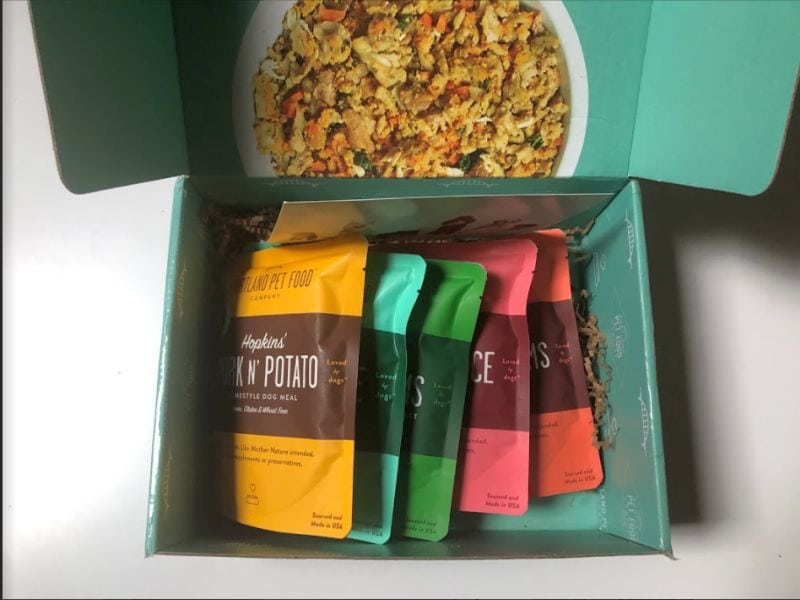
Historically, Spicy is a super selective eater so we’re always on the market for a terrific topper. Thankfully, Spicy adored Portland Pet Food’s recipes.
She started begging as soon as I opened the bag and licked her bowl clean. It’s hard to overstate just how nuts she went over these toppers.
And as a bonus, these toppers didn’t upset her stomach, which is a major plus since her tummy can be temperamental.

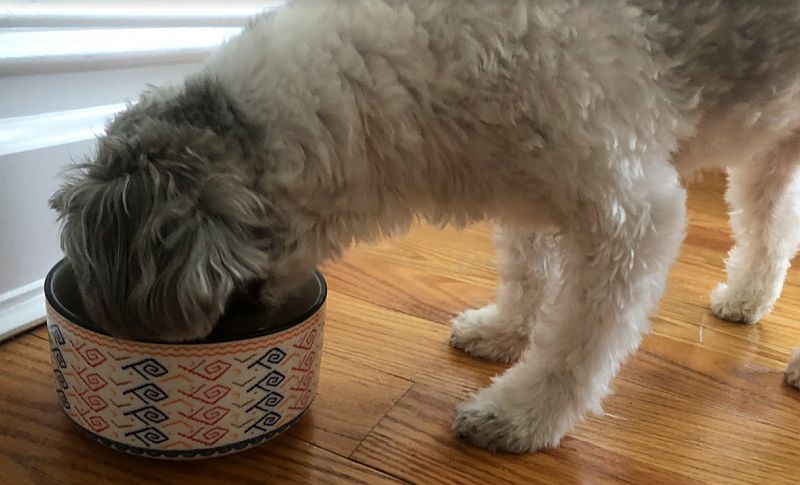
I can definitely see using these toppers for Spicy moving forward, since it’s clear she’s a big fan of the premium ingredients used in these dog food toppers.
Simply put, we wholeheartedly recommend them!
Now, back to your regularly scheduled dog food topper review…
2. Open Farm Bone Broth
Tasty, easy-to-serve dog food toppers that are made from ethically raised livestock and available in three flavors.
Use the code “AFF20” to get 20% off your first auto-ship order!
About: Need a way to improve the flavor of your dog’s food but want to do so in an ethical, environmentally friendly, and convenient way? It’s hard to beat Open Farm’s Bone Broth Toppers.
Made from collagen-rich bone broth with slowly simmered proteins, these tasty liquids are sure to leave your pooch licking his bowl clean!
Features:
- Proteins are raised under third-party-verified Certified Humane conditions
- Open Farm provides unmatched ingredient-tracing opportunities for owners
- Manufactured in Minnesota, USA
- All produce used in Open Farm products in non-GMO
- Environmentally friendly, recyclable packaging
- Available in three tasty, single-protein flavors
Options: Available in three flavors: Grass-Fed Beef, Homestead Chicken, and Homestead Turkey. You can also purchase a three-flavor bundle pack.
Ingredients List
Beef Bone Broth, Carrots, Pumpkin, Parsley, Turmeric, Cinnamon...,
Pros
- Fantastic-tasting toppers that’ll tempt even the pickiest pooches
- We love Open Farm’s dedication to ethical, environmentally friendly practices
- Collagen content may provide joint benefits
Cons
- Require refrigeration after opening
- Low-calorie content isn’t ideal for dogs who need to gain weight
Be sure to check out our in-depth review of Open Farm!
(Spoiler alert: We loved their products.)
3. Flavors Food Topper
About: Flavors Food Topper takes the hard work out of jazzing up your pup’s meal. Just shake it up, sprinkle a measured amount on her food, and watch her enjoy.
Features:
- Grain-free with no corn, soy, or wheat
- Human-grade mixture
- Only ½ tsp needed per one cup of kibble
- Fine powder prevents sneaky pooches from picking out the good stuff
- Easy pantry storage
- Made in the USA
Options: Available in chicken, peanut butter, red meat, and white cheddar flavors and two shaker jar sizes: 3.1 ounces and 6 ounces.
Ingredients List
(Red meat flavor): Beef, Dehydrated Beef Bone Broth, Potato Starch, Dehydrated Sweet Potato...,
Pros
- Pantry-friendly for easy storage
- Super easy to use — just sprinkle it on your pup’s food
- Lower in calories than other options, adding flavor without packing on pupper pounds
Cons
- Since it’s low in calories, it won’t help your dog gain a few pounds like other nutrient-dense formulas
- Not every dog is a big fan of the flavor
4. Blue Wilderness Wild Cuts Trail Toppers
Tasty, meaty, grain-free toppers that are easy to serve.
About: Blue Wilderness Trail Toppers make meal time extra special with chopped meat and a savory gravy. Simply squeeze out a portion (or the whole packet) on your dog’s food and watch her enjoy. For pickier pooches, mix it in thoroughly with your pup’s kibble.
Features:
- Each packet contains the good stuff — real chunked meat
- Grain-free formula has no corn, soy, wheat, or by-products
- Intended to be a supplemental topper, so serve this with your dog’s regular food
- Store at room temperature unless opened (refrigerate unused portion)
- Made in the USA
Options: Offered in a variety of flavors, including chicken, salmon, beef, and duck formulas.
Ingredients List
(Chicken recipe) Chicken, Chicken broth, Water, Chicken Liver, Dried Egg Product...,
Potato Starch, Natural Flavor, Guar Gum, Sodium Phosphate, Salt, Sodium Carbonate
Pros
- Made with real meat and mixable gravy
- Each flavor’s ingredient list starts with a protein
- Uses natural flavors
- Made in the USA
Cons
- Can be messy
- Some flavors contain multiple proteins
5. Stella & Chewy’s Freeze-Dried Raw Meal Mixer
Grain-free, freeze-dried raw dog food that's packed with nutrients, probiotics, and antioxidants.
About: Make your mutt’s meal time a scrumptious experience with Stella & Chewy’s Freeze-Dried Raw Meal Mixer. Made with real meat and a medley of veggies, it’s a nutrient-dense, grain-free dog food topper.
Features:
- Includes a mixture of meat, organs, and ground bones
- Crafted in small batches, ensuring quality
- Formulated as a supplemental meal topper for all life stages
- Pantry-friendly
- Made in the USA
Options: Available in four bag sizes, ranging from 3.5 ounces to 35 ounces, and in eight flavors: beef, chicken, duck, lamb, pork, turkey, seafood, and a salmon/cod combo.
Ingredients List
(Chicken recipe) Chicken With Ground Bone, Chicken Liver, Chicken Gizzard, Pumpkin Seed, Organic Cranberries...,
Organic Spinach, Organic Broccoli, Organic Beets, Organic Carrots, Organic Squash, Organic Blueberries, Fenugreek Seed, Potassium Chloride, Dried Kelp, Sodium Phosphate, Tocopherols, Choline Chloride, Dried Pediococcus acidilactici Fermentation Product, Dried Lactobacillus acidophilus Fermentation Product, Dried Bifidobacterium longum Fermentation Product, Dried Bacillus coagulans Fermentation Product, Zinc Proteinate, Iron Proteinate, Taurine, Calcium Carbonate, Vitamin E Supplement, Thiamine Mononitrate, Copper Proteinate, Manganese Proteinate, Sodium Selenite, Niacin Supplement, D-Calcium Pantothenate, Riboflavin Supplement, Vitamin A Supplement, Vitamin D3 Supplement, Vitamin B12 Supplement, Pyridoxine Hydrochloride, Folic Acid
Pros
- Very convenient to use
- Made in the USA
- Most flavors only contain a single protein
- Contains probiotics to support digestive function
- Because it’s dry, cleanup is a snap
Cons
- These toppers are pretty pricey
- May allow picky dogs to eat around the kibble
6. The Honest Kitchen Bone Broth Pour Overs
Delicious dog-food supplements that give you an easy way to boost the nutritional value and taste of your dog's food.
Use code K930 to get 30% off your order!
About: The Honest Kitchen Broth Pour Overs pack a punch of nutrition and a taste that dogs love! Ideal for getting your dog the extra goodness she needs, this mixture contains a balanced serving of real meat and vegetables.
Features:
- Prepared in a human food production facility
- Intended as a supplement to your doggo’s regular meals
- No corn, soy, wheat, or by-products included
- Made in the USA with globally sourced ingredients (none from China)
Ingredients List
Chicken bone broth, chicken, pumpkin, apples, butternut squash,...,
tapioca, potato, cinnamon, ginger
Pros
- Top-notch ingredient quality
- Made in human food production facility
- Contains antioxidant-rich fruits and veggies
- Single-protein recipes
Cons
- Premium ingredients come at a price
- Ginger is a bit of a head-scratching ingredient
7. Brutus Bone Broth
About: Your fussy eater may meet her match with Brutus Bone Broth, a tasty splash that’s free of artificial flavors, dyes, and preservatives. A hip- and joint-supporting formula, these toppers give your pooch an added boost of glucosamine and chondroitin for bone health.
Brutus Bone Broth is also on our list as one of the few things you can give your dog to drink besides water.
Features:
- Made with natural, human-grade ingredients
- Formulated for all dogs
- Low-sodium formula
- Ideal for older pups who need kibble softened
- Can be served over kibble or on the side as a hydration boost
- Made in the USA
- Can be frozen in cubes for future use beyond 21 days after opening
Options: Available in beef and chicken formulas, this broth comes in 2, 6, and 12-count options.
Ingredients List
(Beef formula) Beef Broth, Glucosamine Hydrochloride, Vegetable Broth, Sea Salt, Natural Flavor...,
Beef Flavor, Chondroitin Sulfate, Yeast Extract, Modified Potato Starch, Turmeric
Pros
- Liquid-style toppers are very easy to use
- Prevents picky pups from eating around kibble
- Joint-supporting additives are a bonus
Cons
- May be messy
- Relatively low-calorie formula won’t help thin dogs put on weight
How Do You Pick a Good Food Topper for Your Dog?
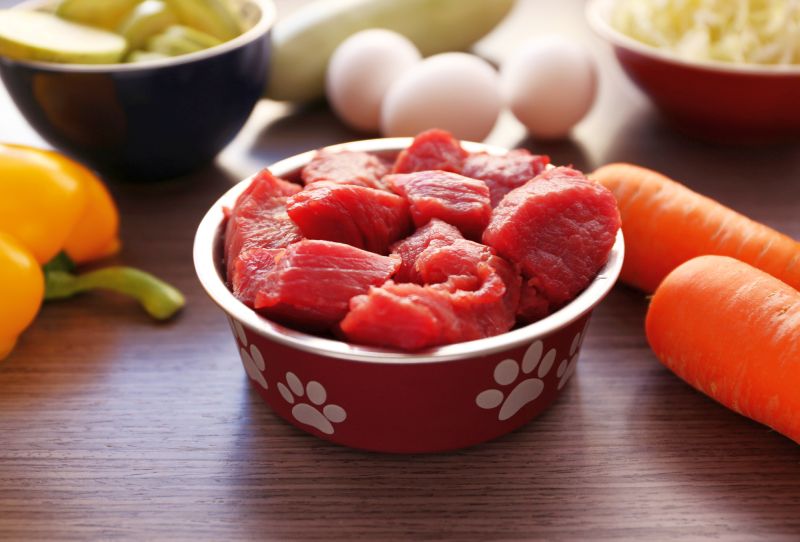
Selecting the right food topper for your pup is similar to how you’d pick her regular food. You want to take a good look at your pooch and consider her:
- Age: Your dog’s needs vary as she grows. A puppy requires nutrients to aid in growth, while an elderly pup may benefit from extra glucosamine and chondroitin for joints.
- Breed: Your four-footer’s overall size and background shape her eating habits. A large breed puppy requires food to help her grow safely, for instance. Meanwhile, Chihuahuas (including deer- and apple-headed varieties) may need smaller-sized toppers that are easier to chew because of their tiny jaws.
- Overall health: Some health conditions may require you to be extra critical of your dog’s food, like chronic pancreatitis or diabetes. Always chat with your vet first just to be sure you’re selecting a food and topper that will work best for your special needs pupper.
- Dietary needs: If your canine connoisseur has any food allergies or sensitivities, you need to monitor a potential food topper’s ingredients carefully to find hypoallergenic food ingredients. Ingredients can be sneaky, so you never want to assume that a food only contains the flavor-specific protein. For example, chicken fats and similar poultry products may appear in a salmon-based topper.
- Weight: Doggos that are pleasantly plump shouldn’t be fed empty calories, so toppers aren’t always a good idea. Conversely, a skinny mini of a dog who needs to be fattened up would benefit from a more calorically dense option. If you’re really looking to help a dog pack on some pounds, consider combining toppers with an already high calorie dog food for weight gain.
- Taste: Not every protein will tickle your pupper’s palate. My Peke-Chi mix Taj would stage a hunger strike rather than eat turkey, for instance. You need to pick a protein your dog will enjoy along with formula that mixes into kibble, preventing her from picking out the topper.
In addition to considering your dog’s health, desires, and lifestyle, you’ll want to examine the food itself too. When examining a potential food topper option, pay attention to:
- Shelf life: With shelf lives varying from weeks to months (or even over a year), it’s important to consider how long you’d like a topper to last. Some require you to buy in bulk, which is usually OK if you have more than one dog, but if you only have an itty-bitty Yorkie at home, you might run into an issue with spoilage.
- Storage needs: From the freezer to pantry, meal toppers have vastly different storage needs. While most kibble survives just fine in a dog food storage container in the closet, some toppers require refrigeration at all times, which may encroach on your food space. Others are OK to store at room temperature, even after opening.
- Prep required: Some toppers need more prep work than others, with frozen patties requiring thawing, for example. This may sound minor, but it can throw off your daily routine, especially if you forget to thaw it before meal time. Others might need mixing or other preparation with your pup’s regular food, which can mean more cleanup.
Homemade Dog Food Toppers
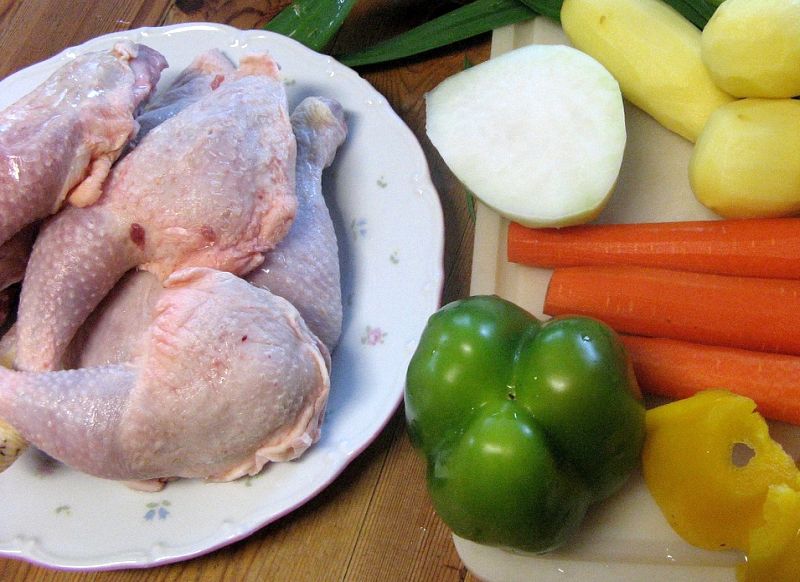
You can always make a tasty homemade dog food topper for your fur kid — plenty of pet parents do! These are great if your dog has food sensitivities, and you’d like more control over what goes into her diet.
That said, homemade dog food toppers require a fair amount of preparation, and purchasing meat can get pricey. Not only that, but a homemade food topper’s shelf life is limited, and it must be refrigerated.
1. A Fork’s Tale Homemade Chicken Dog Food
About: A Fork’s Tale Homemade Chicken Dog Food is a set it and forget it recipe that you can prepare in your crock pot. It’s designed as a meal, but it’d work great for a topper too. This also means it’s calorie-dense, it’s ideal for dogs who need to gain a few pounds or maintain their weight.
Ingredients:
- 3 pounds ground chicken
- 1 cup butternut squash
- 15-ounce can of low-sodium kidney beans (drained)
- 1 cup peas
- 1 cup green beans
- 1 cup chopped carrots
- 1 ½ cups uncooked rice
- 4 cups water
Directions: Add all ingredients to your crock pot and stir together. Cook on high for four hours or low for six hours. Stir occasionally as it cooks.
Once prepared, one cup of this topper provides roughly 297 calories, so a little goes a long way. Just be sure to refrigerate any leftovers.
Since this makes a decent amount of food, you can always half the recipe or freeze excess portions.
2. PawCulture’s Fancy Fish Topper
About: PawCulture’s Fancy Fish Topper is a fish-loving Fido’s dream. Made with an assortment of fresh, yummy ingredients, it’s a well-rounded addition to your dog’s diet.
Ingredients:
- 10 ounces cooked Atlantic mackerel
- 14 ounces green beans
- 5 ounces goat yogurt
- 2 small boiled and peeled eggs
- 28 ounces boiled skinless mashed sweet potato
- 10 blueberries
- 1 cored apple
- 1 teaspoon calcium carbonate
Directions: Combine vegetables and fruits in a food processor. Add this mixture to the yogurt, calcium carbonate, and mashed sweet potato in a large bowl. In another bowl, mash cooked fish and eggs into small pieces. Fold the egg and fish blend into the remaining mixture.
Then, just mix in those bonus ingredients in with your dog’s dry kibble to make his eats irresistible.
This recipe makes seven portions for a medium-sized dog. Keep any unused portion refrigerated, or freeze and defrost as needed.
Dog Food Topper FAQs
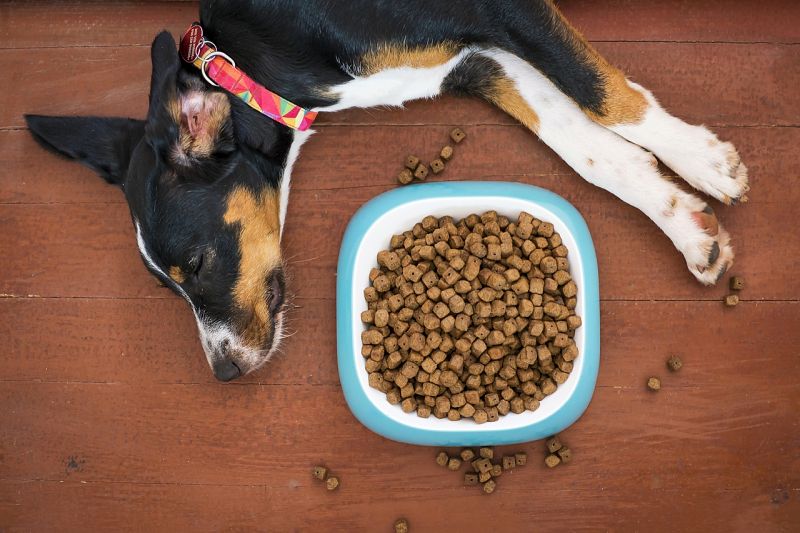
Dog food toppers are relatively new on the market, but the concept is one that pup parents have practiced for years. If you’re still unsure about them, here are some highlights to consider:
Do dog food toppers improve canine health?
Meal toppers can boost your dog’s overall health by encouraging an otherwise picky pooch to clean her bowl.
This helps her maintain her weight and avoid some of the unpleasant side effects of not eating, such as spitting up bile. Many dog food toppers contain added nutrients and extras that benefit your pup, such as glucosamine and chondroitin.
Do dog food toppers have any risks?
Too much of a good thing is your biggest risk with dog food toppers. Always use them in moderation and monitor your pooch’s weight.
If you notice her packing on the pounds, decrease the amount of topper you’re feeding her or seek a lower calorie option. Some topper formulas can also be too rich for dogs with sensitive systems, so introduce new mixtures slowly to prevent any stomach upset.
Are dog food toppers necessary?
No. Dog food toppers are merely an optional tasty addition to your dog’s bowl, though they can make meal time easier for you and more enjoyable for your fur friend.
Why use dog food toppers, anyway?
Dog food toppers are a delicious treat as well as a great enticement for dogs that may need encouraging to eat, such as senior pups. Wetter formulas can also soften kibble, making it easier for dogs with dental issues to eat (of course, you can also just add a bit of wet dog food to your pup’s kibble to achieve the same effect).
Can you make your own dog food toppers?
Absolutely. Creating your own dog food topper mixture at home is a great way to control every ingredient — a must if your pooch is prone to sensitivities.
Why is my dog picky?
Like us, dogs have likes and dislikes. Some dogs are just more stubborn with their dislikes than others. That said, if you notice your dog suddenly acting picky, it’s time to schedule a vet appointment. Unexplained anorexia can be an early indicator of trouble.
***
Does your woofer enjoy a mealtime topper? Have you tried any of the dog food toppers on our list? Do you use something else? Let us know in the comments!

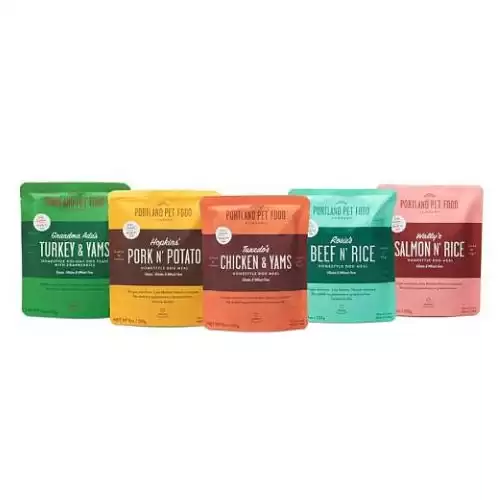
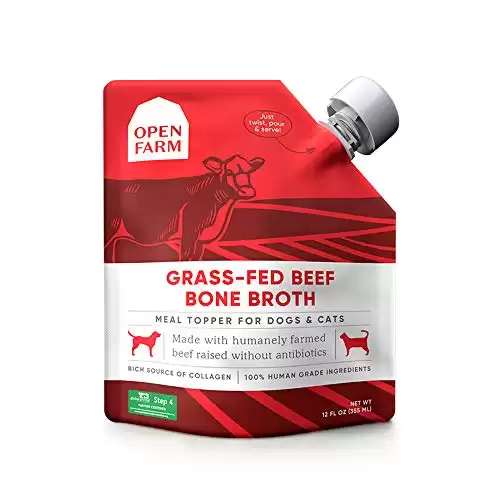
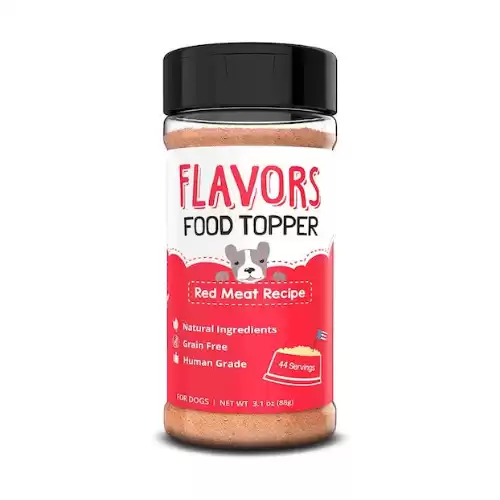
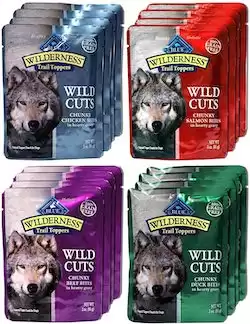
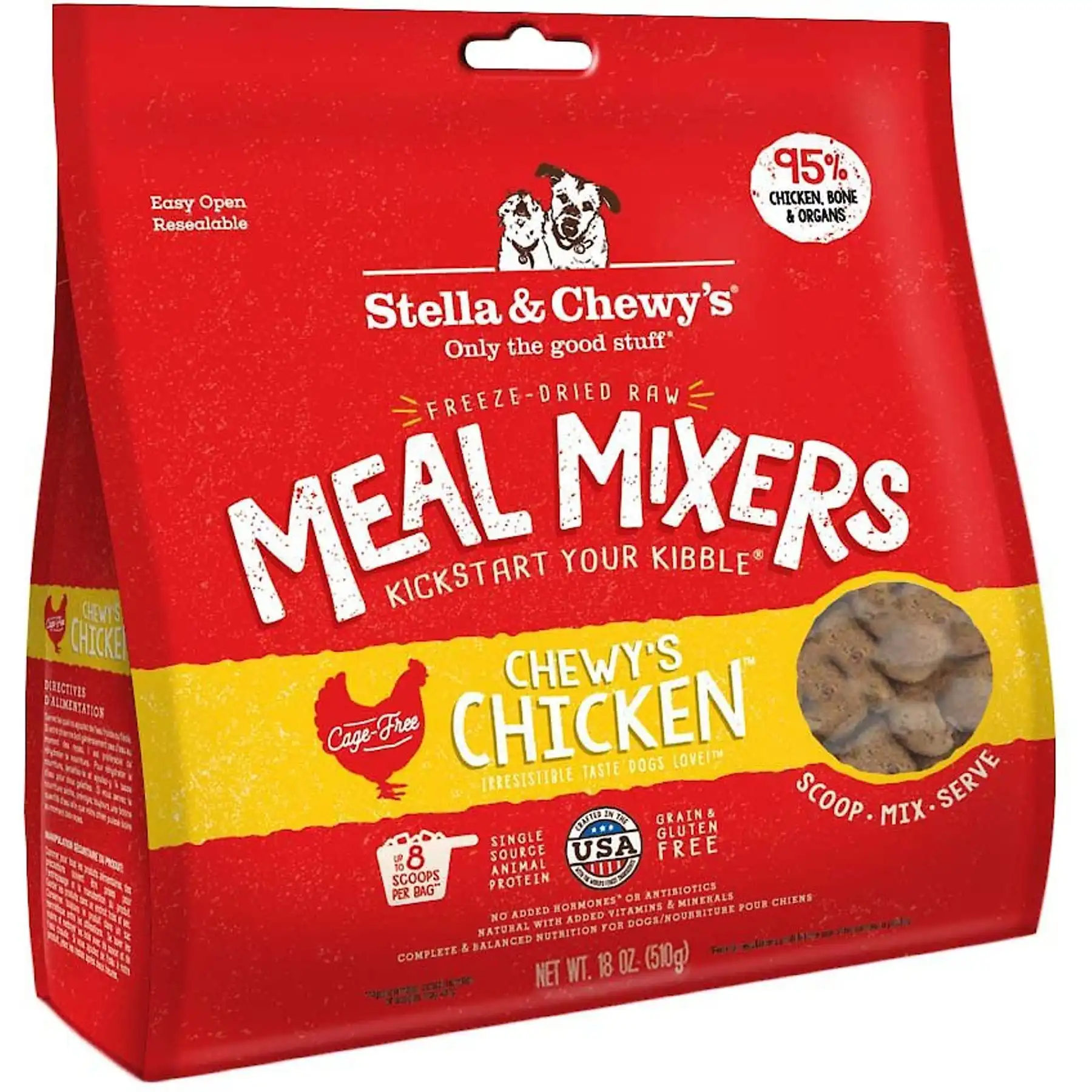
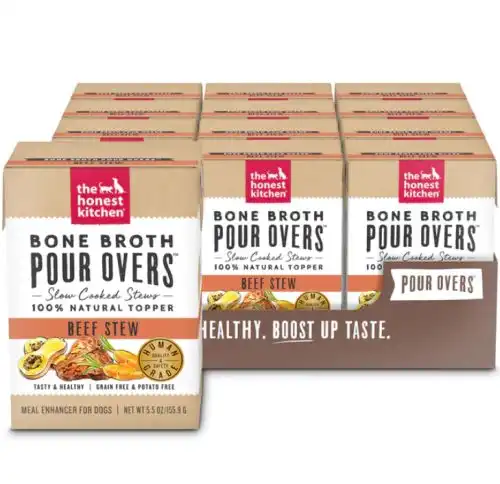
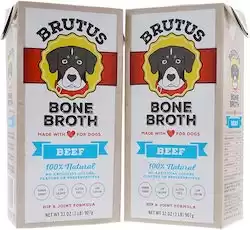
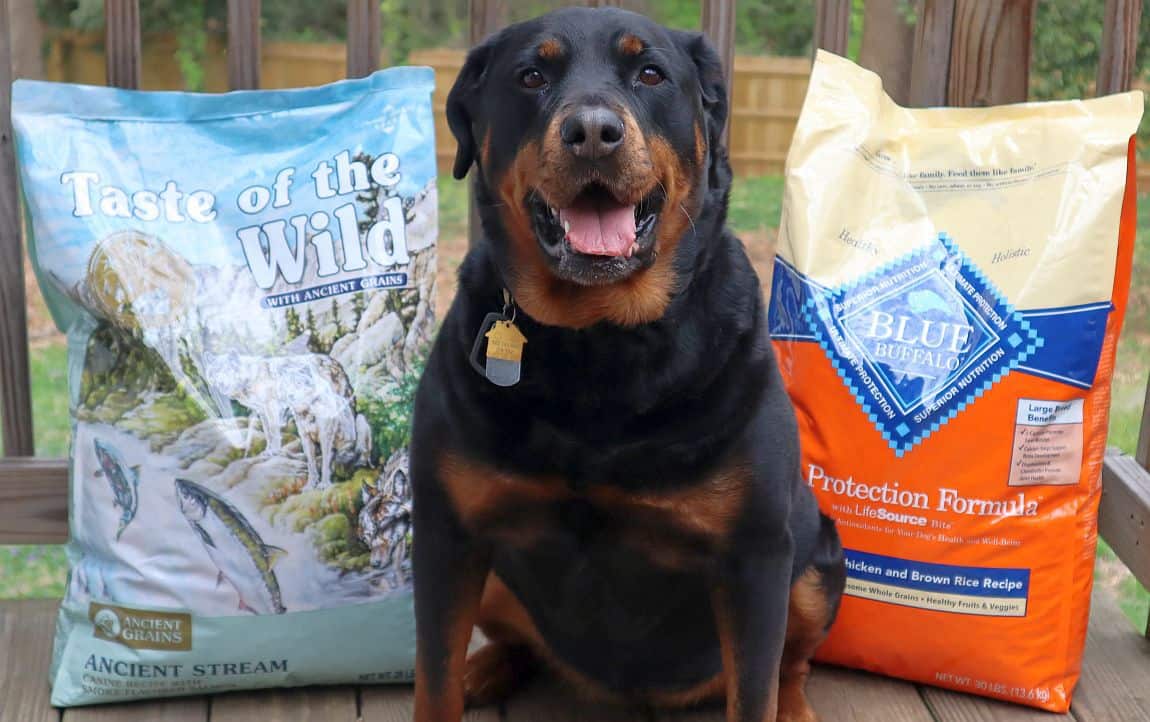



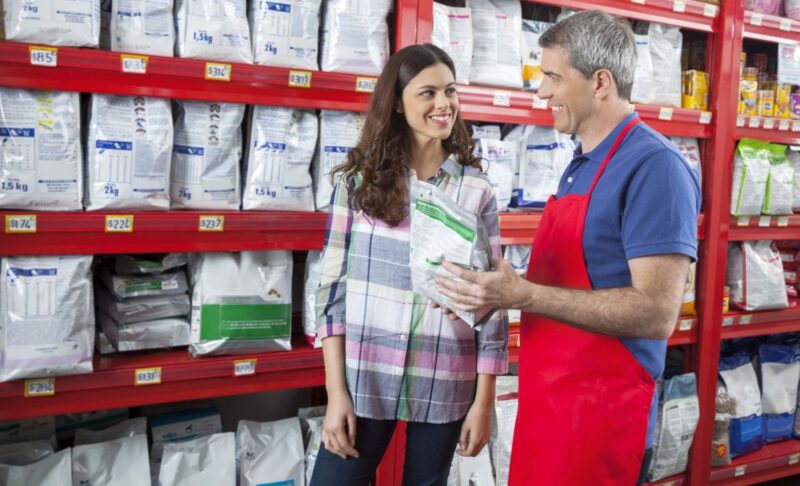


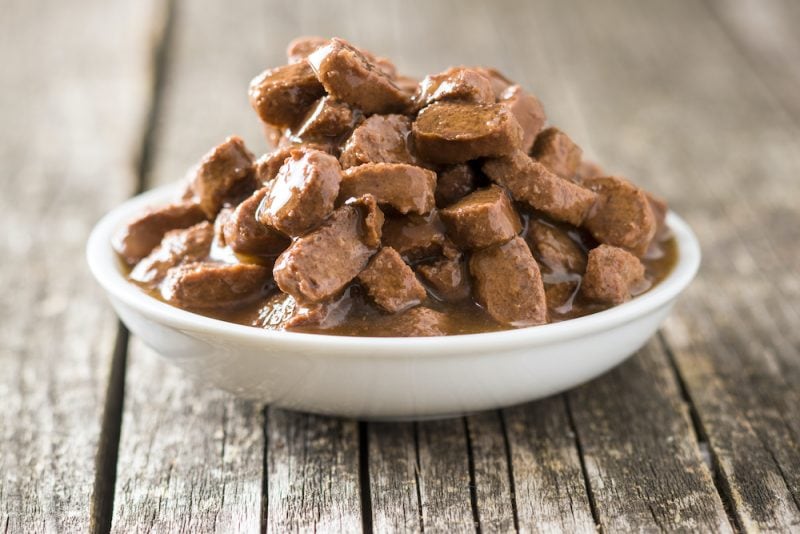
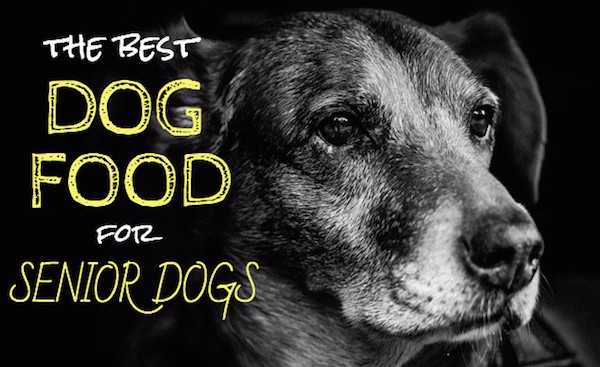

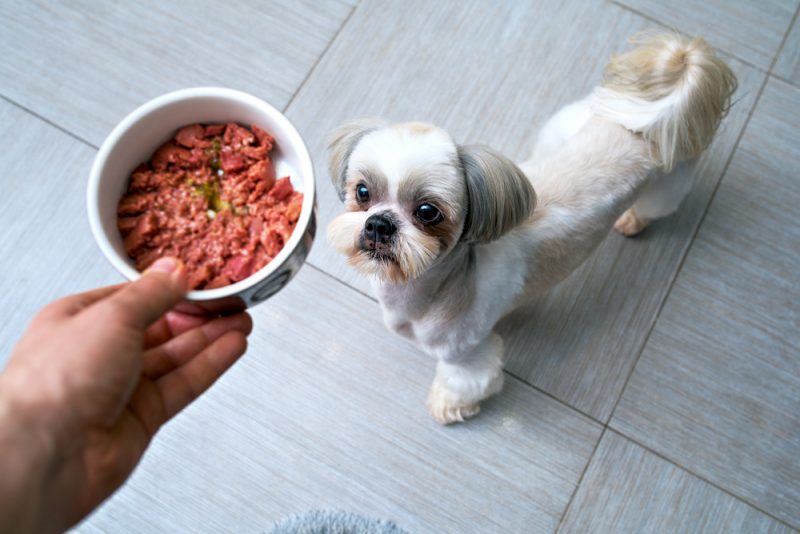

Leave a Comment